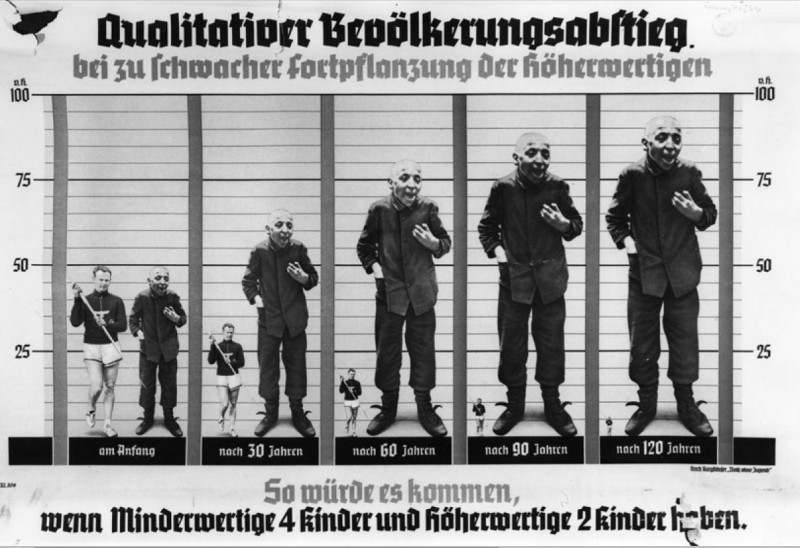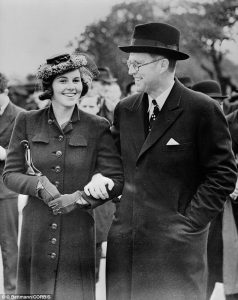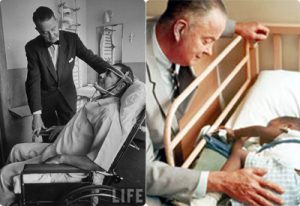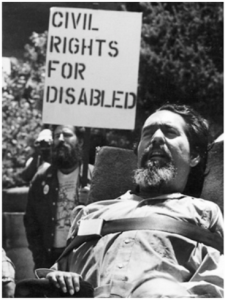Government Disabled Eugenics Euthanasia
Franklin Roosevelt was the first US President who was disabled. One of his administrations most famous programs (if not the most famous) was Social Security. Typically thought of as financial assistance for the elderly, it also helps children of the disabled, orphans, and the disabled themselves.
The 20th century slowly saw the expansion of government assistance for the disabled in the United States (in stark contrast to what happened in Nazi Germany.)
Here are several examples:
Government Disabled Eugenics Euthanasia
Social Security
August 14, 1935: President Franklin Delano Roosevelt signed the Social Security Act, establishing a program of permanent assistance to adults with disabilities.
Government Disabled Eugenics Euthanasia
Nazi euthanasia
In 1939 at the onset of World War II Adolph Hitler ordered widespread “mercy killing” of the sick and disabled. Code-named Aktion T4, the Nazi euthanasia program is instituted to eliminate “life unworthy of life.” Between 75,000 to 250,000 people with intellectual or physical disabilities are systematically killed from 1939 to 1941.
Government Disabled Eugenics Euthanasia
Rosemary Kennedy
In 1941, John F. Kennedy’s twenty-three year old sister Rosemary underwent a prefrontal lobotomy as a “cure” for lifelong mild retardation and aggressive behavior that surfaced in late adolescence. The operation fails, resulting in total incapacity. To avoid scandal, Rosemary was moved permanently to the St. Coletta School for Exceptional Children in Wisconsin. [2009 Guardian article]
Government Disabled Eugenics Euthanasia
1950s
Barrier-free movement
In the 1950s, disabled veterans and people with disabilities begin the barrier-free movement. The combined efforts of the Veterans Administration, The President’s Committee on Employment of the Handicapped, and the National Easter Seals Society, among others, results in the development of national standards for “barrier-free” buildings.
Association for Retarded Citizens
In 1950, parents of youth diagnosed with mental retardation found the Association for Retarded Citizens (ARC). The association works to change the public’s ideas about mental retardation. Its members educate parents and others, demonstrating that individuals with mental retardation have the ability to succeed in life. (ARC, see December 31, 1998)
Government Disabled Eugenics Euthanasia
Dr. Howard A. Rusk
In 1948 Dr. Howard A. Rusk founded the Rusk Institute of Rehabilitation Medicine in New York City, where he developed techniques to improve the health of injured veterans from World War II. His theory focused on treating the emotional, psychological and social aspects of individuals with disabilities and later became the basis for modern rehabilitation medicine. [NYT obituary]
Government Disabled Eugenics Euthanasia
Clemens Benda
In 1953 Clemens Benda, clinical director at the Fernald School in Waltham, Massachusetts, an institution for boys with mental retardation, invites 100 teenage students to participate in a “science club” in which they will be privy to special outings and extra snacks. In a letter requesting parental consent, Benda mentions an experiment in which “blood samples are taken after a special breakfast meal containing a certain amount of calcium,” but makes no mention of the inclusion of radioactive substances that are fed to the boys in their oatmeal. 1994 article
Government Disabled Eugenics Euthanasia
American Standards Association
In 1961 the American Standards Association, later known as the American National Standards Institute (ANSI), publishes the first accessibility standard titled, Making Buildings Accessible to and Usable by the Physically Handicapped. Forty-nine states adapted accessibility legislation by 1973.
Government Disabled Eugenics Euthanasia
Ed Roberts
In 1962 Ed Roberts, a student with polio, enrolled at the University of California, Berkeley, but later his admission was rejected. He fought to get the decision overturned. He became the father of the Independent Living Movement and helped establish the first Center for Independent Living (CIL). He earned B.A. (1964) and M.A. (1966) degrees from UC Berkeley in Political Science. Roberts died on March 14, 1995, at the age of 56. [NYT obituary]





